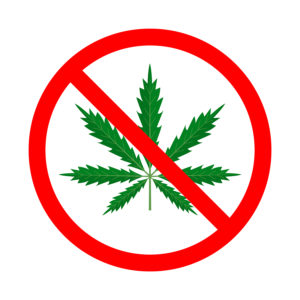You’ve probably see
The moral of the commercials: if you have a powerful tool, it can accomplish more than you might assume. You might think you need an industrial shredder to grind up an ipod, but it turns out that a mere blender actually can do the job quite nicely.
In the policy realm, and particularly when we’re talking about trying to find answers to our nation’s disastrous war on drugs, we need to be asking an analogous question: will it regulate?In other words, is there a way that the basic tools of civil regulation can accomplish the goals we all want to see enacted around drug use? Can mere regulation — as opposed to blanket prohibition, which requires the massive support of law enforcement, prosecutors, courts, prisons and jails — do things like ensure drug purity, prevent young people from accessing mind-altering drugs, and discourage adults who use drugs from throwing their lives away to addiction?
When one considers the sprawling, obscure world of the illegal drug trade, it’s initially hard to see how the answer could be “yes.” But in some ways the very fact that we are dealing with a field that is so sprawling and so obscure is, itself, the product of a societal decision not to regulate “illegal” drugs in the same way that we regulate, for example, Tylenol or Budweiser.
Lawrence Lessig, a Stanford law professor who writes about the regulation of the Internet, has made a point that bears on this issue. Lessig has argued persuasively that many of the seemingly “unregulable” aspects of cyberspace — such as the ease with which individuals may act online in total anonymity — are not inherent in the Internet. They are simply designchoices made by those who developed the Internet, and different choices could just as well lead to different outcomes, at least in those areas of the Internet that need to be used by large groups of people for basic services like commerce and banking. Moreover, Lessig emphasizes, law can and should be involved in directing such design because the design of things like markets and infrastructures can have serious social consequences.
Lessig illustrates the role of structural design in regulation with this little image, which shows the way four different societal forces exert pressure on the dot in the middle, which represents individual behavior. The term “architecture,” in this illustration, doesn’t simply mean “architecture” in the narrow sense of the design of buildings and roads but rather in the broad sense of the design of all aspects of our world, to the extent that we can design such things.
The striking thing about our current system for dealing with “illegal” drugs is that the “law” component of the regulatory scheme is as bloated as Popeye’s forearms, while the “architecture” component is almost wholly absent. Lessig points out that the government has occasionally taken rather perverse attempts to venture into the “architecture” realm by, “for example, spraying marijuana field with fields with paraquat” in order to make the marijuana more dangerous to consume. But for the most part there is no attempt to deal structurally with the design of drugs by, for example, mandating that heroin be uncut with other substances. Heroin is simply criminalized, period, and its “architecture” is left wholly to the perverse whims of those who manufacture the stuff for the black market, which is why we occasionally get rashes of deaths as people overdose on drugs that are much stronger than expected. It’s also why as a society we can bitch and moan about marijuana getting more potent but not actually do anything to influence that trend.
In contrast, the “architecture” of “legal” drugs is one of the most intensely regulated areas of law in our society. Drugs must be approved by the FDA for particular uses in particular populations, and they must be sold in doses that are appropriate to those uses, labeled in a way that makes such use as safe as possible, and dispensed only by people who are specifically authorized to deal with such drugs. People can still “abuse” drugs that are designed and packaged in this manner but we rely on the architecture of the system to at least make the sale of such drugs as safe as possible. In the prescription drug realm, then, the answer to the question “Will it regulate?” is “Of course! One would have to be blind to suppose otherwise.” It is only our tendency to accept the status quo that makes us suppose that the “architecture” of other drugs, such as marijuana, cocaine, and heroin, could not similarly be controlled through regulation.
This short-sightedness
reform as being nothing more than the suggestion that society should engage in some sort of drug-fueled bacchanalia as we abandon all efforts to control ourselves. The only alternative they can conceive of to our intensely criminal-law-driven system is a system that has no constraints at all.
But the alternative to drug prohibition is not a free-for-all: it’s regulation. It’s regulation via the same powerful policy tools that we already use to control the manufacture and sale of prescription and over-the-counter drugs and recreational commodities like tobacco. It’s regulation of precisely the sort we already put in place around alcohol after the 21st amendment was ratified and alcohol prohibition was ended. It’s an effort to create a system that shows some of the balance of Lessig’s diagram, and not the skewed, wholly criminal-law based approach that we use today.
Will it regulate? Faced with the extraordinarily ineffective nature of the control created through the “war” model of drug policy as well as the devastating impacts that this “war” is having on our own people, the question really ought to be on the other foot. Why wouldn’t it regulate? And why aren’t we trying it already?